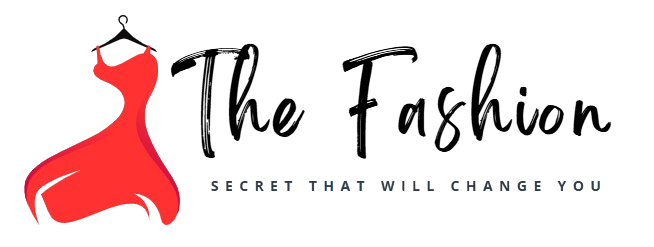
The interplay between fashion and nature has always been a symphony of colors, textures, and forms. From the delicate veins of a leaf to the iridescent shimmer of a beetle’s shell, the natural world offers an inexhaustible wellspring of ideas for designers. Fashion design inspiration from nature is not merely a trend—it’s a timeless dialogue between human creativity and Earth’s artistry. This article delves into the symbiotic relationship between these two realms, exploring how organic elements shape avant-garde designs, sustainable practices, and futuristic innovations.
The Historical Roots of Nature in Fashion
Long before the term “biomimicry” entered the lexicon, civilizations drew from nature’s palette. Ancient Egyptians adorned themselves with lotus motifs, symbolizing rebirth, while Renaissance artisans embroidered garments with intricate floral patterns to signify wealth and vitality. The 19th-century Arts and Crafts movement celebrated handcrafted textiles featuring botanicals, rejecting industrialization’s sterility. Today, fashion design inspiration from nature continues to evolve, blending ancestral reverence with cutting-edge technology.
Biomimicry: Engineering Elegance from Ecosystems
Biomimicry—the practice of emulating natural processes to solve human challenges—has revolutionized modern fashion. Designers study spider silk’s tensile strength to create durable, lightweight fabrics or mimic pinecone scales to develop adaptive textiles that respond to temperature. For instance, Stella McCartney’s collaborations with Bolt Threads introduced Mylo™, a mushroom-derived leather alternative that mirrors the suppleness of animal hide. Such innovations exemplify how fashion design inspiration from nature can marry ethics with aesthetics.
The Science of Shapes: Phytomorphic and Zoomorphic Design
Phytomorphic (plant-inspired) and zoomorphic (animal-inspired) elements dominate collections. Iris van Herpen’s 3D-printed gowns, resembling coral reefs, and Alexander McQueen’s avian-themed runway pieces showcase how organic geometries transcend mere ornamentation. These designs often incorporate fractal patterns—repetitive, self-similar shapes found in ferns and snowflakes—to evoke a sense of infinite complexity.
Color Palettes: Earth’s Masterstroke
Nature’s chromatic diversity is unmatched. Pantone’s annual color forecasts increasingly reflect “ecochromatic” trends—think moss greens, oceanic blues, and desert ochres. Designers like Gucci and Etro employ gradient dyeing techniques inspired by sunsets or mineral strata, creating fabrics that appear alive. Meanwhile, Indigenous artisans use plant-based dyes, such as cochineal insects and indigo, to produce vibrant hues that honor ancestral knowledge. Fashion design inspiration from nature thrives in this kaleidoscopic exchange, where every shade tells a story.
Textures: From Forest Floors to Celestial Skies
Texture is nature’s silent language. Designers replicate lichen’s fuzzy tactility with tufted fabrics, evoke riverbed erosion through laser-cut leather, or mirror birdsong’s rhythm with sequin arrangements. Marine ecosystems, too, offer muse-worthy textures: scalloped edges reminiscent of seashells, translucent layers mimicking jellyfish, or knitted sweaters that echo coral’s porousness. These tactile experiences invite wearers to connect with the environment through touch, deepening the emotional resonance of garments.
Sustainable Synergy: Ethical Fashion Rooted in Ecology
As climate urgency grows, sustainability anchors fashion design inspiration from nature. Brands like Patagonia and Eileen Fisher pioneer closed-loop systems, where waste is repurposed into new collections. Bamboo, hemp, and algae-based fibers reduce reliance on synthetics, while dyeing processes harness rainwater filtration systems. Even packaging draws from nature—seed-embedded tags that bloom when planted or compostable garment bags. This ethos transforms fashion into a regenerative force, proving that style need not exploit the planet.
Cultural Narratives: Nature as Storyteller
Indigenous cultures have long woven environmental narratives into textiles. Māori koru patterns symbolize new growth, Navajo storm motifs depict weather cycles, and Japanese sashiko stitching repairs fabrics in homage to wabi-sabi (beauty in imperfection). Contemporary designers amplify these voices: Oaxacan artisans partner with labels like Caravana to create embroidered pieces telling stories of maize harvests, while Nigerian designer Kenneth Ize integrates Yoruba aso-oke weaving with modern silhouettes. Here, fashion design inspiration from nature becomes a bridge between heritage and horizon.
Futuristic Frontiers: Technology Meets Terroir
The future of fashion lies in merging biology with bytes. Biofabrication labs grow leather from cellular agriculture, while 3D printers craft accessories modeled on honeycomb structures. Digital fashion, too, embraces nature—virtual garments in NFTs (non-fungible tokens) feature hyperrealistic flora and fauna, accessible in metaverse ecosystems. Even AI algorithms analyze ecological data to predict emerging trends, ensuring designs remain harmonized with planetary shifts.
Conclusion: Cultivating a New Aesthetic Ecosystem
Fashion design inspiration from nature is more than mimicry—it’s a philosophy. By observing how ecosystems adapt, collaborate, and thrive, designers can create clothing that celebrates resilience and interconnectedness. Whether through a dress that mirrors the Northern Lights or a handbag crafted from apple peels, fashion becomes a canvas for environmental advocacy. As we stride into an era defined by climate consciousness, let every stitch, hue, and silhouette remind us: nature is not just a muse—it’s a partner in design.
This article blends historical insights, technical innovation, and cultural reverence to illuminate how nature’s genius shapes the fabric of fashion. By embracing organic wisdom, designers craft a future where beauty and sustainability are inseparable.
